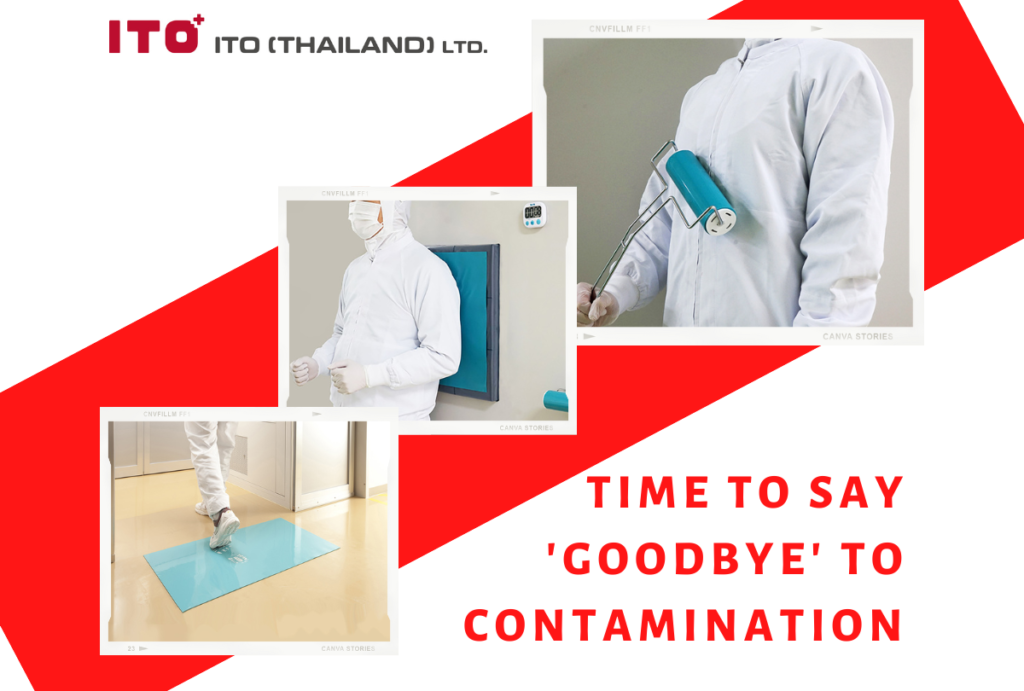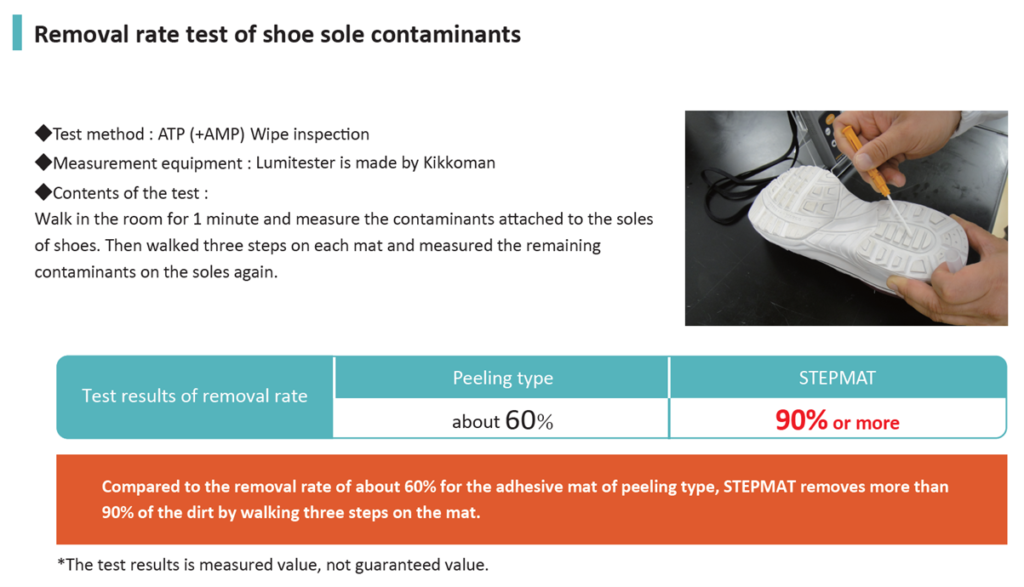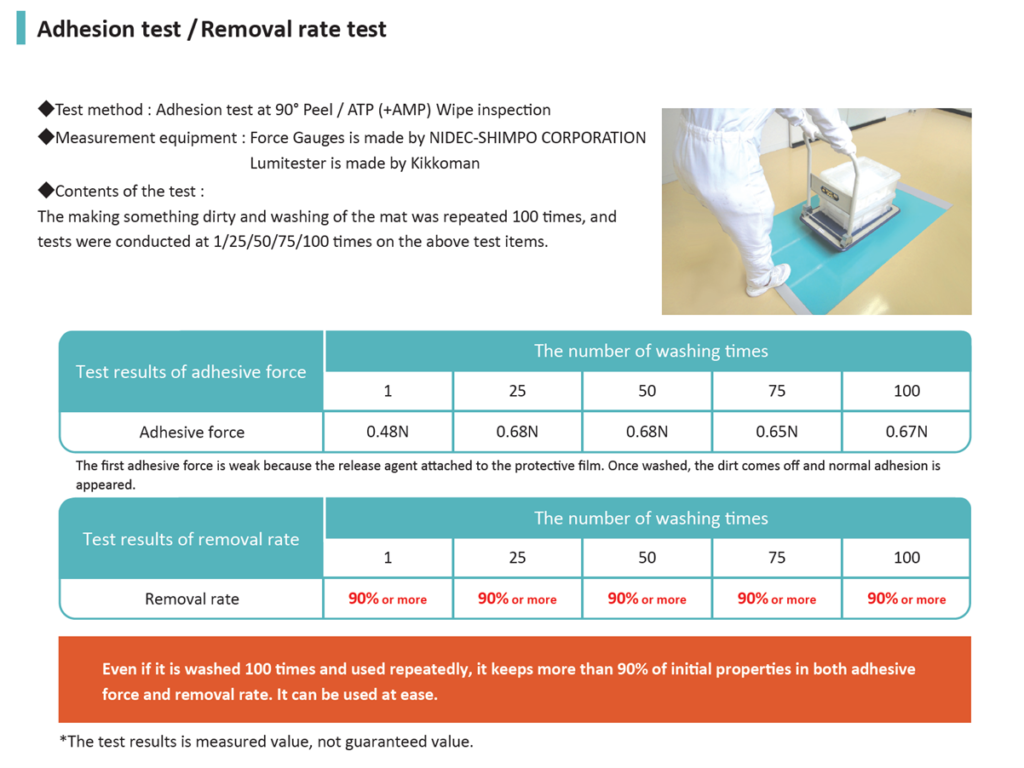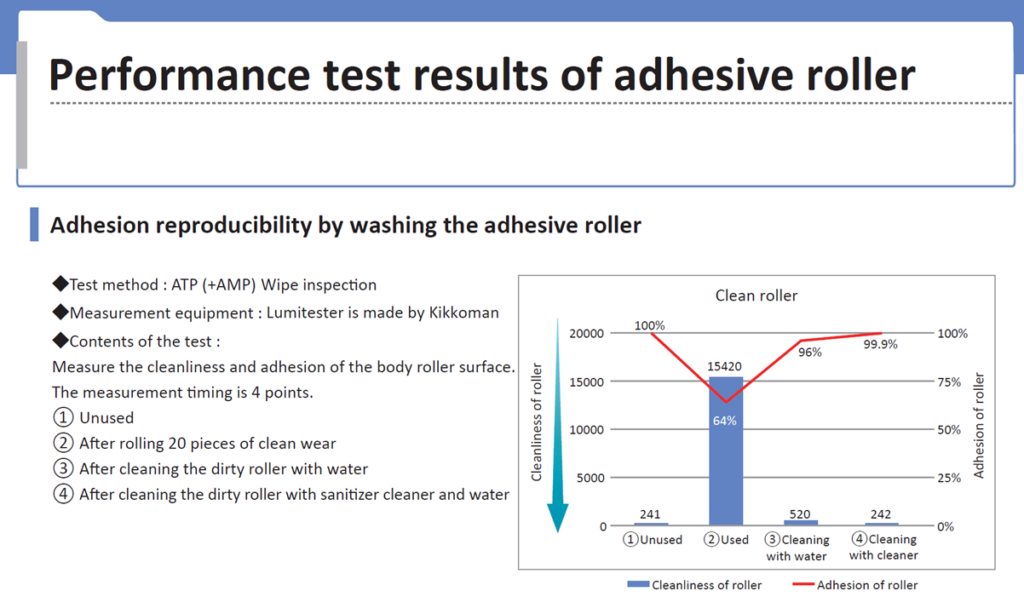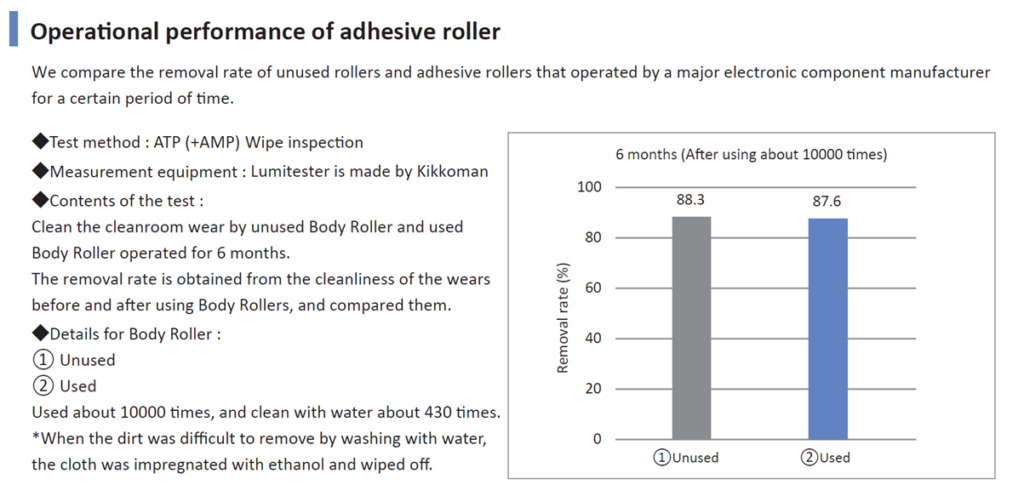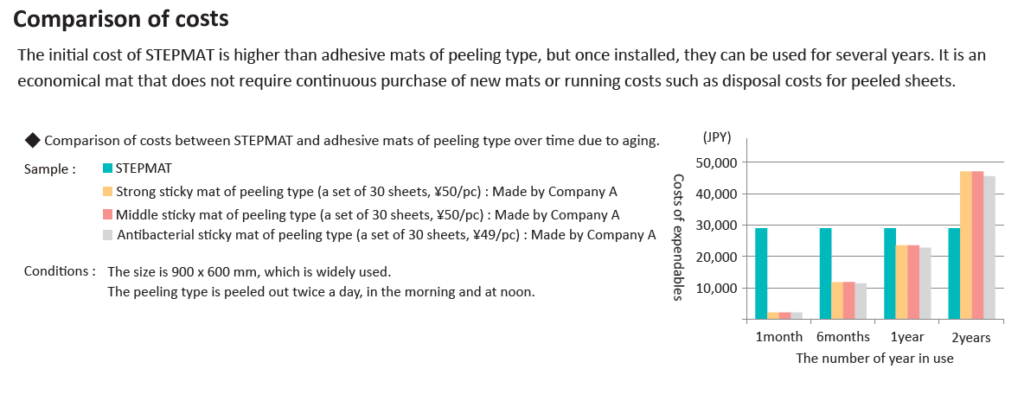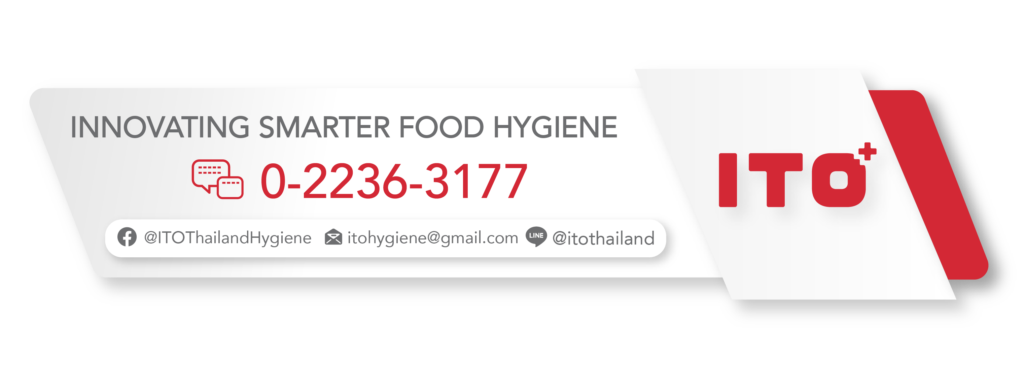ITO Thailand Hygiene Blog
Innovation for sustainable physical contamination prevention
It is known that external impurities pose a food safety risk. One of the main channels of contamination is the presence of humans as a carrier of dust and dirt into the production or high-risk areas, causing dirt, germs, or foreign matters to contaminate food and harm consumers.
Contamination carriers and prevention
In a workday, employees enter and exit the production area and the outside multiple times. In each entry and exit, they may inadvertently carry dirt or food hazards into the production area, such as germs from the toilet, the employees’ hair, soil, insect remains that have been stepped on by shoes and dust, lint, or allergens that can get on the employees’ clothing, for example.
The protection against contamination may vary in severity according to the sensitivity, product types and target consumer groups. However, the general principle is to follow good hygienic requirements such as hand washing and disinfection before going into the production area, wearing a hair net and mask as needed, changing clothes, shoes or wearing an apron, etc. Nevertheless, to raise the cleanliness standard in the factory, increase credibility to end customers or in consumer-sensitive products, technology may be used to prevent contamination more effectively.
Technology to prevent physical contamination
Technology commonly used in the food industry to prevent contamination from workers may be divided according to the principle used to pull dirt out of the employees.
•Adhesive force
An adhesive surface is used to pull dust or dirt from the target surface, such as a peel-off adhesive roller, disposable adhesive pedal pads. The dirt will stick to the adhesive surface, and the adhesive sheet is peeled off to prepare a new adhesive surface. This is a widely used method because the tool has convenient access, it comes in a variety of brands, it is easily understood by the employees, it does not require electricity, and it takes up less space to manage. But there is a limitation as the adhesive surfaces must come in direct contact with dirt to be able to pull out the dirt, and the adhesive surface must have enough tensile strength. Normally, the reused adhesive sheets will have less adhesion because dirt partly obscures the area of the adhesive. The adhesive sheets must be replaced regularly. If neglected and there is not enough adhesive sheet replacement, dirt from the previous person can spread to the clothes of the next person using the adhesive, or the chemicals in the adhesive may also stick to the clothes. To replace the adhesive sheet, it must be properly peeled off and disposed of to prevent contamination. In addition, there must be a plan to manage the storage space to store the adhesive sheets for sufficient use.
•Vacuum force
Vacuum force is used to pull dirt out of the body such as dust and hair vacuum cleaners. The nozzle may not need to come into direct contact with dirt to suck it out. The collected dirt is collected in a dust bag, making continued use possible. There is no need to peel new sheets during congested traffic of entry and exit. There are additional functions to define usage standards such as setting the timer per use, counting the number of uses, etc. There are many types of brush heads depending on the nature of use. But there is a limitation. The installation site requires electrical wiring, and it may take time for employees to adjust in the beginning.
•Wind force
In addition to the use of wind suction, the wind may also be used to blow dirt out of the employees’ bodies, such as an Air shower, which is a closed cabinet that blows wind for a specified period to allow the dirt to escape from the employees. The advantage is that it can blow all employees at the same standard. It is easier to force the employees to use than other methods because the machine is in the entrance to the production area. But there is a limitation. It requires electricity and enough space to install.
•Washing
In addition to the use of wind blowing, other mediums may be used to wash away impurities, such as rinsing with water and cleaning solutions. This method is advantageous because it can clean better than dry cleaning. But there is a limitation. It can be used only in waterproof areas such as shoe cleaners, etc.
Innovation to prevent contamination
In addition to the technology mentioned above, Ito (Thailand) would like to offer another option, which is Urethane gel sheets to trap dust and dirt. It is an innovation from Japan in preventing dirt contamination such as dust, hair, fur and fibers, etc. that maintains the same advantages of the disposable adhesive sheets in terms of ease of use, the less need of space, no electricity involved and waste reduction and inventory management restrictions. The product is cleaned by rinsing or rubbing with water to clean the dust trap area instead of peeling off the sheets. And the same product can be used repeatedly. The urethane gel sheets come in a variety of forms to suit the use with many outstanding aspects.
•Multipurpose from home use to industry
The urethane gel dust trap can be used to collect dirt from clothing lint, dust, pet hair, etc., making it suitable for both household use and industrial cleanliness. It comes in a variety of formats ranging from the body roller with a short handle for collecting dirt from clothes and body. The body roller is divided into general use types and anti-static type for areas susceptible to static electricity, a step-mat on the floor to trap shoe dust with a patented design to have different functions suitable for taking the weight in each use, the Haimen mat with base plate that can collect dirt on the back of employees that are difficult to reach with a roller. The base plate will help support the employees’ back to effectively touch the gel pad. There is also an air shower wall panel to reduce the spread of dust, trap the dirt blown from the employees so that it does not go back onto the clothes again.
Body roller
Traps dust and hair on the body or a surface of choice.
STEP MAT
Suitable for trapping dirt on the shoe soles
Haimen mat
Traps dirt on the back that is hard to reach by the roller
Dust catcher
Helps trap dust in the air shower and prevent it from filling the air.
•High efficiency
Urethane gel sheets can effectively trap dust. Comparing the dust trapping on the body and under the shoe sole with the peel-off adhesive sheets, it was found that the urethane gel sheets can trap more than 90% of the dust and the cleaning rate can be maintained even after repeated washing.
•Resources saving and Support sustainability
Urethane gel product can be easily cleaned by rinsing with water, wiping with wet cloth or mopping with a mop to remove dirt to make the gel sticky again. The product also has a unique design to make the material durable. This allows it to be reused for up to 3 years, reducing the space to stock adhesive sheets, the long-term costs and the amount of waste from the use of disposable adhesive sheets to trap dust.
Can be cleaned by washing with water or a mop
Can be placed to suit the use in many areas
References
1.Loomans, M. G., Ludlage, T. B. J., van den Oever, H., Molenaar, P. C., Kort, H. S., & Joosten, P. H. J. (2020). Experimental investigation into cleanroom contamination build-up when applying reduced ventilation and pressure hierarchy conditions as part of demand controlled filtration. Building and Environment, 176, 106861.
Related Post
-

Liquid nitrogen in food industry
You maybe have heard that liquid nitrogen can rapidly freeze the food, haven’t you? And what are its advantages and benefits? Let's get to know the liquid nitrogen in food industry with ITO (Thailand).
-
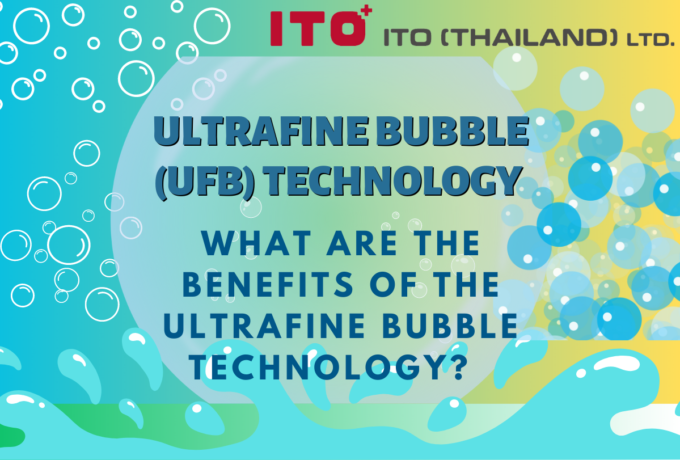
Ultrafine bubble (UFB) technology (Part 2)
The previous content has discussed the benefits of the ultrafine bubble technology in agriculture, livestock, and fisheries, cleaning raw materials and various surfaces. Today, we will continue to learn about the use of the ultrafine bubble technology in food production processes and waste management from the food industry and how to create these tiny gas bubbles.
-

Ultrafine bubble (UFB) technology (Part 1)
Simple bubbles when transformed into the micro-nano level can do more than you think. Let's learn about the technology of these tiny bubbles and their application in the food industry with ITO (Thailand).
-
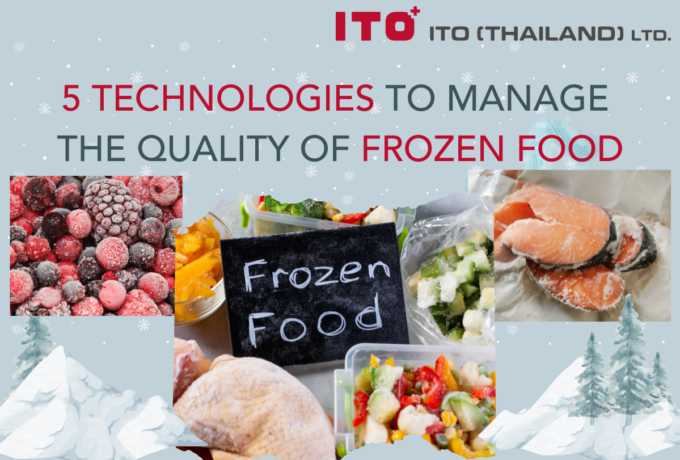
Frozen food storage management
Freezing is a method of food preservation commonly used in food that goes bad quickly such as ready-to-cook fresh food, ready meals, or foods in which nutritional values decay easily, or have substances that are sensitive to temperature, light, oxygen, etc. Freezing uses a principle of quickly solidifying water in the products, making the molecules of the substances unable to react to one another, thus the foods last longer. It also suppresses the growth of microorganisms and kills parasites. For instance, USFDA suggested controlling parasites in fish consumed raw such as sushi and sashimi by freezing the fish at the minimum of 20 degrees Celsius for 7 days or stored at -35 degrees Celsius for 15 hours to control parasites in fish (conditions may depend on the size of the fish as well).
-
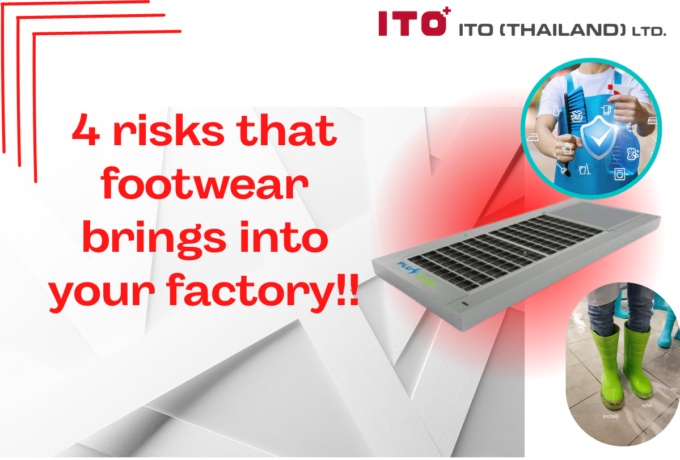
Boot Cleaner
Pay attention to the hygiene of the footwear for good hygiene in the food industry
-
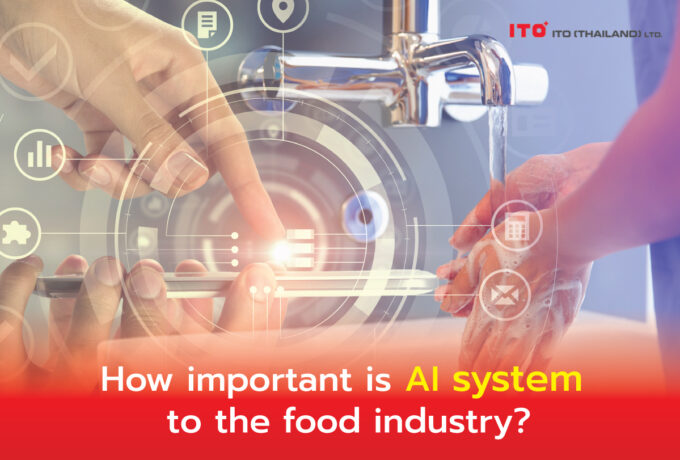
AI technology in Food industry world
Case study of HACCP assisted hand washing system by AI technology








